Due to the increasing shortage of native lumber, people are starting to plant forest trees, but choosing what fast-growing trees to plan can be challenging. If you plan to plant trees to have lumber in the future or to use it in furniture, we list five fast-growing trees here to provide you with several options. When we say fast-growing trees, we are talking about trees that can be harvested within five to ten years.
This list is limited only to forest tree species. You may also visit our list of profitable fruit trees to plant.
Five Fast-growing Trees in the Philippines to Plant
1. Gmelina Arborea
Gmelina is undoubtedly the number one choice of most people who plant trees for lumber. When properly managed, it can be harvested as early as five years. Gmemilina is also the most sustainable forest tree to plant because it regrows when cut down. Its coppice shoots grow faster than those planted from seeds.
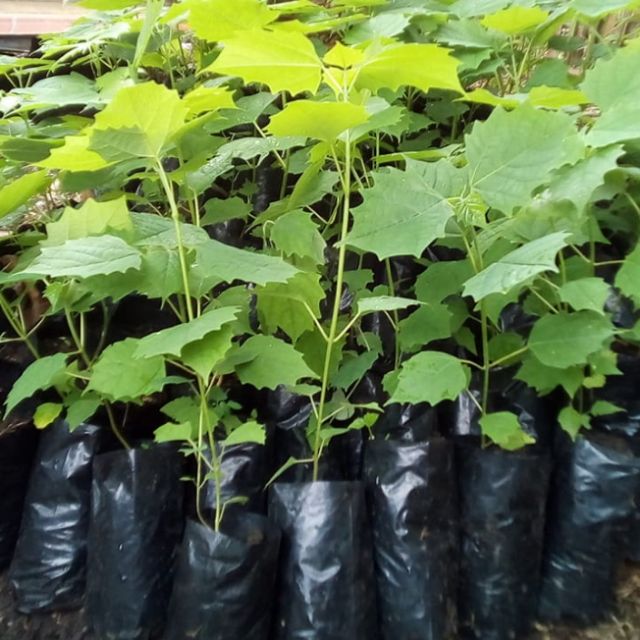
Gmelina trees planted from seeds can usually be harvested at six years, while those from coppice shoots can be harvested at five years. Gmelina lumber is the number one option for local inexpensive furniture and is also used in house construction, especially in rural areas. In a properly managed plantation, Gmelina can provide income to the farmer every five to six years without replanting.
2. Lapnisan (Agarwood)
Lapnisan or agarwood is a non-timber type of wood used for its sap or resin, which is used in the perfume and scents industry. The tree is rare and is found in the deepest parts of the jungles of Southeast Asia, including the Philippines. Since you don’t have to cut down the tree to harvest its valuable product, agarwood can be harvested within four years.
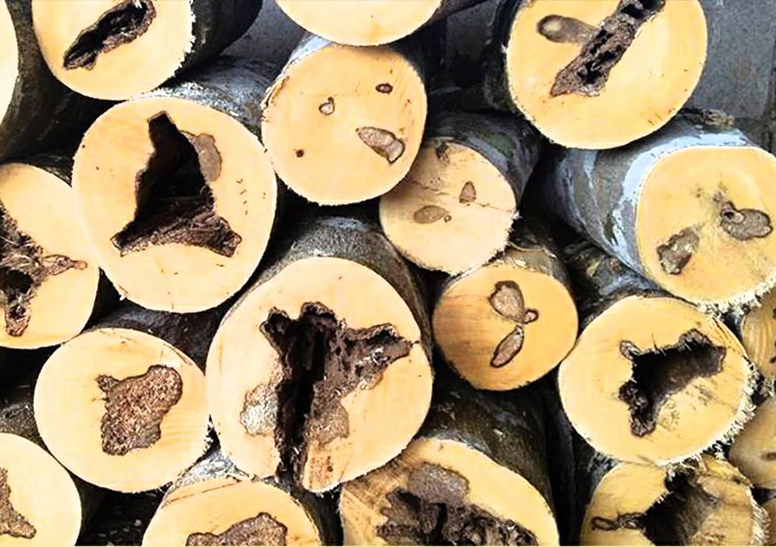
Agarwood’s popularity has been increasing as many people are becoming interested, but before planting Lapnisan, make sure to know the market and whether there are possible buyers. Farming agarwood can be highly profitable if you have a ready customer to buy your products, but it can also result in a big loss if there is no customer to buy.
The selling of agarwood or lapnisan is illegal in the Philippines if it comes from wild trees inside the forest. It would be best if you had your own plantation to be allowed to sell agarwood.
3. Mahogany
Mahogany can be harvested starting in ten years if properly managed. Mahogany lumber demands a bit higher price than gmelina but its application is limited to furniture. Mahogany is not advisable for house construction as it can easily break despite being hardwood. If you plan to plant mahogany, follow the panting distance of at least 3 meters apart for faster growth.
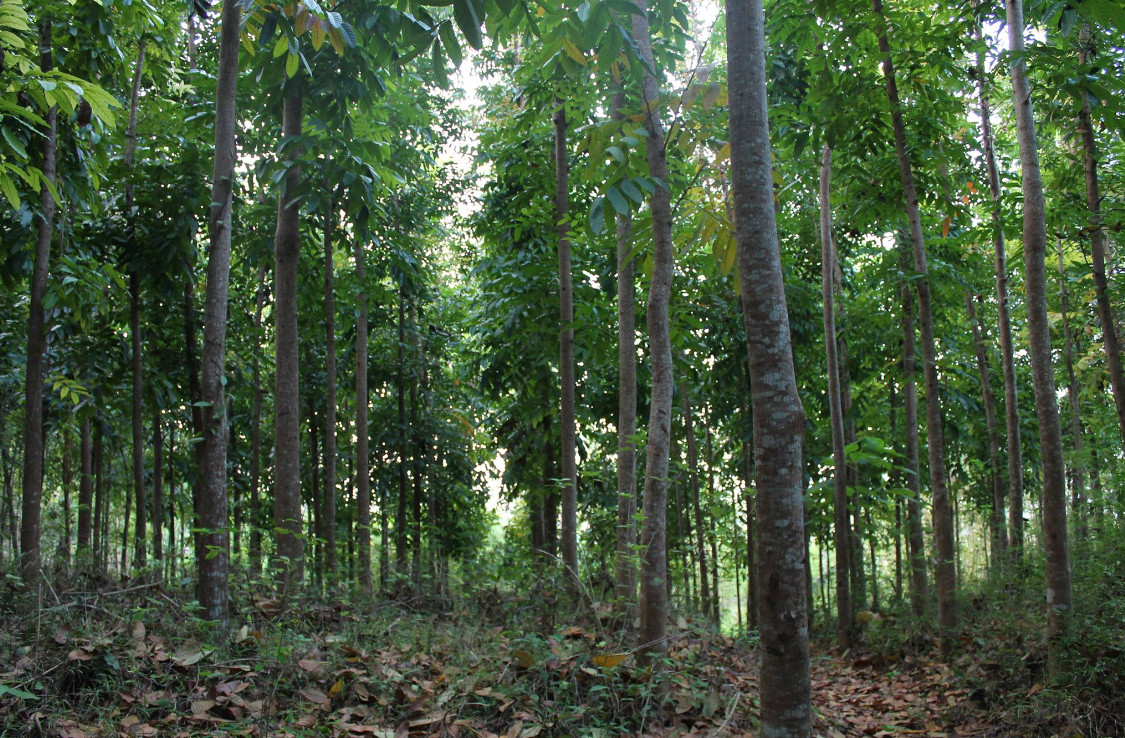
4. Kakawate and Ipil-ipil
Although kakawate (madre de cacao) and Ipil-ipil are not considered timber tree species, both have high economic value to people who know how to utilize these trees. Both tree species can be used in live fencing and can save you hundreds of thousands of pesos if you have at least a hectare of land that needs to be protected. Both trees’ leaves can also be used as animal fodder, and both are hardwoods and excellent furniture materials. Although ipil-ipil wood is prone to pests and insects, proper treatment can avoid this problem.
Kakawate takes at least ten years to produce furniture-ready timber, but it can produce high-quality charcoal and firewood within two to three years. Ipil-ipil trunk can be harvested to be used in furniture starting five years. Both trees regrow fast.
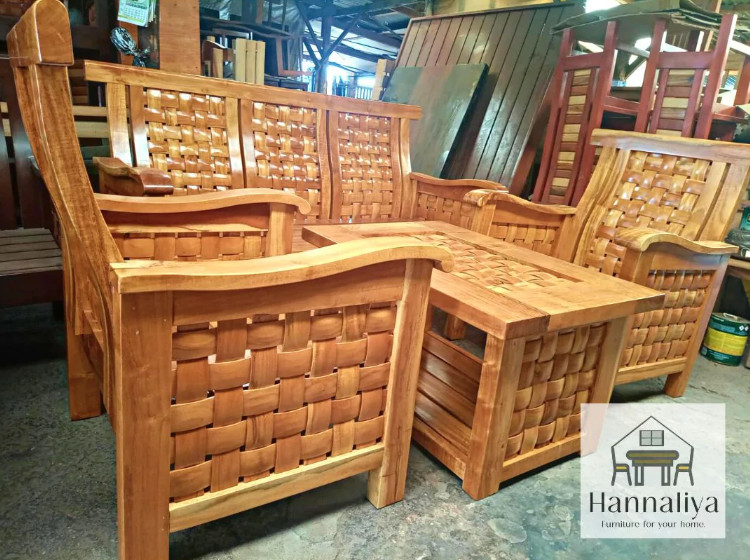
A one-hectare kakawate and ipil-ipil plantation can provide a non-stop supply of high-quality charcoal and firewood without killing the trees while waiting for kakawate’s main trunk to mature for later use in furniture. A good practice is to leave at least 10 feet of kakawate’s trunk to mature while harvesting the new branches every two years. On the other hand, if you plan to harvest ipil-ipil trunk later, do not cut the main body – just cut the branches. The tree attracts pests, and the inside rot if you cut its main trunk.
5. Narra
Narra is the most expensive lumber in the Philippines, and even though it takes at least ten years to harvest and cannot regrow, panting Narra is worth every year that passes by. Most government areas like city halls, public schools, parks, and hospital compounds have Narra trees. You can only see old Narra trees in these places. If you want to plant Narra, ensure it faces the sunshine and has at least 8 hours of daily sunlight. Narra can grow slower under the shade of other trees, coconuts, or bamboo.
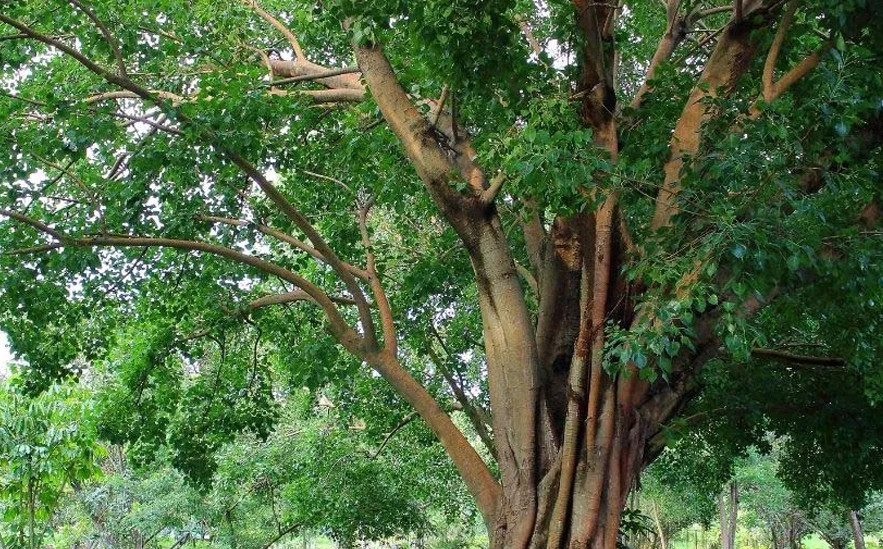
Yes, there are other high-value tree species for timber here in the Philippines, but most native trees like Almaciga, Lawaan, Yakal, Molave, Tindalo, Toog, and others take more than 15 years to grow to reach their productive age.
Questions Related to Fast-growing Trees in the Philippines
What is the best wood in the Philippines?
Narra is considered the best wood in the Philippines. It is a very popular wood known by everyone in the Philippines and is also the “National Tree” of the Philippines. It is sometimes referred to as the “lifetime wood” for the older generation because Narra furniture becomes a family heirloom that lasts many generations.
How much is agarwood in the Philippines?
Agarwood is one of the most expensive raw materials used in perfumery, costing at least P160,000 per kilo in the Philippines.
Where is agarwood found in the Philippines?
Wild lapnisan can only be found in the heart of the jungles in Mindanao and Visayas.
What is the strongest wood in the Philippines?
There are several hardwood species in the Philippines but magkono is considered the hardest and strongest. Commonly known as magkono or Philippine ironwood (scientific name: Xanthostemon verdugonianus) is a species of plant in the family Myrtaceae. It is endemic to the Visayas, Palawan, and northeastern Mindanao islands. It is valued for its highly durable and heavy timber.
What is the most common tree in the Philippines?
Gmelina (Gmelina arborea). Although Gmelina is not a native Philippine tree, it is the most important and widely distributed forest tree species in the Philippines due to its economic importance and fast-growing characteristics. It also does not kill other tree species and can, therefore, be grown alongside other native plants and trees.
Why plant native Philippine trees?
According to the Rain Forest Restoration Initiative, native trees help recover and expand forest habitats for threatened native species of plants and animals. They protect the watershed and freshwater resources and secure the livelihood of local people.
Is Acacia a native tree in the Philippines?
Acacia confusa (Small Philippine Acacia) is a species of tree in the legume family. It has a self-supporting growth form and is native to Taiwan, China, and The Philippines. It has compound, broad leaves.
See Also:
- 6 Best Trees for Flood Control
- Why Agroforestry is Important in the Philippines
- Bamboo Farming and Production in the Philippines
- Narra Tree: All You Need to Know
- Almaciga Tree: All You Need To Know
